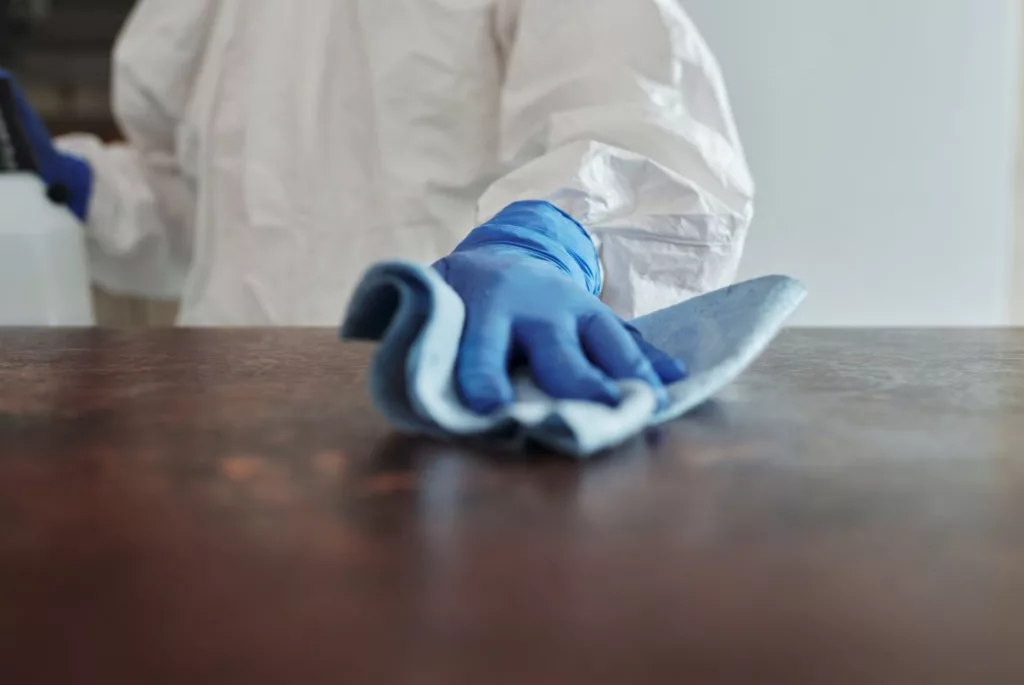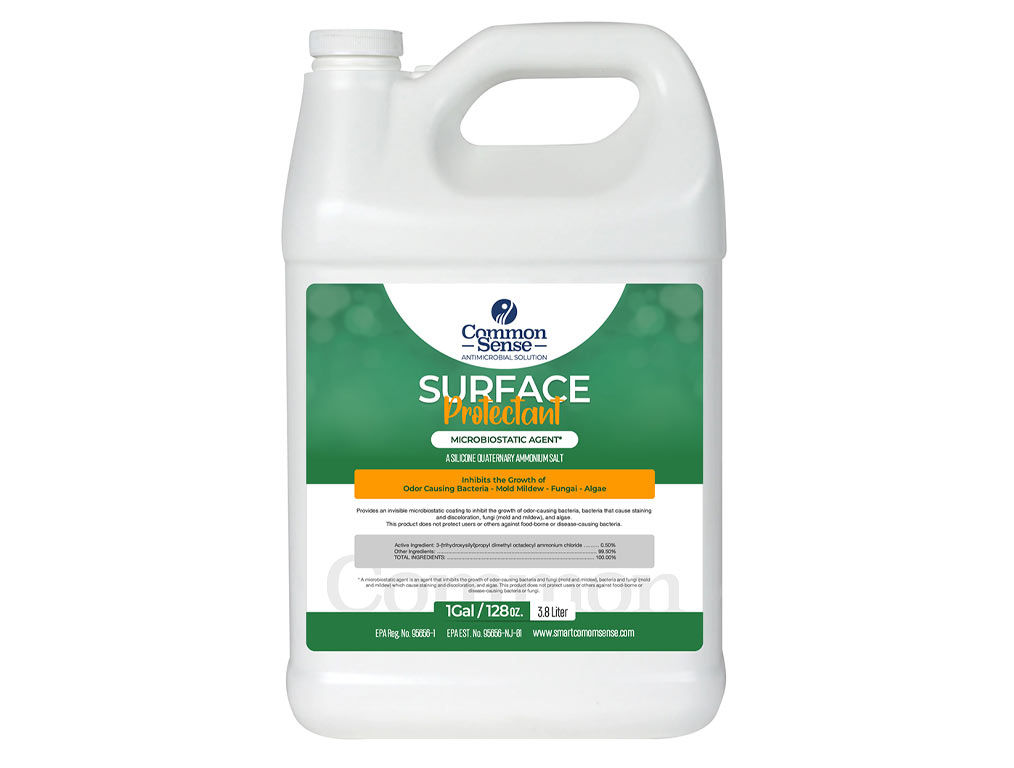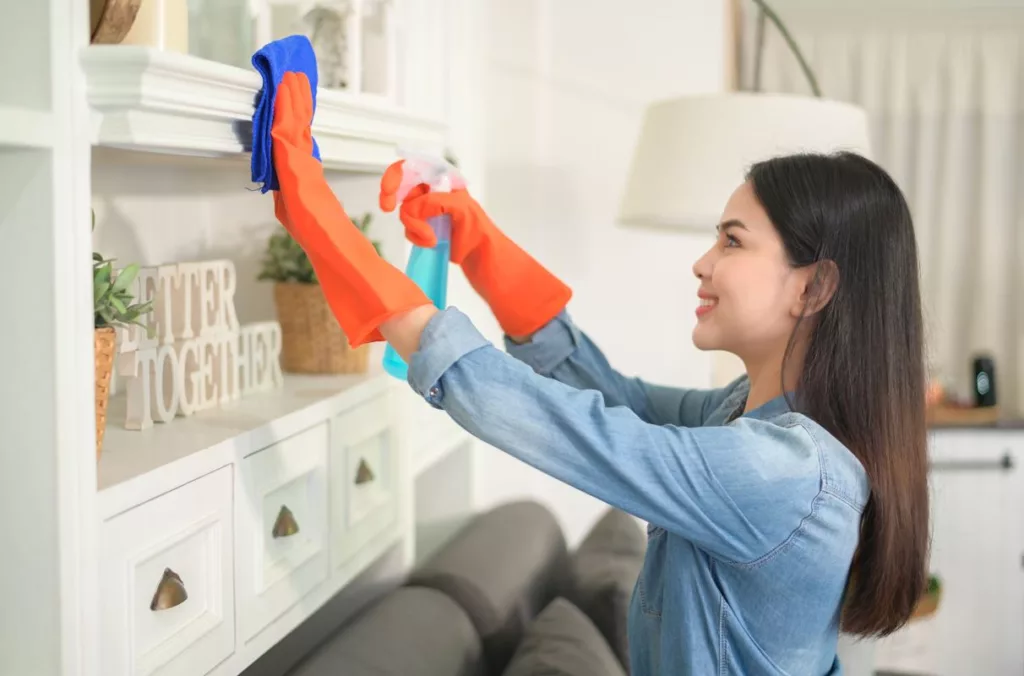Maintaining a clean and safe environment is essential, whether you’re at home or in a commercial space. But, even with regular cleaning, harmful bacteria, mold, and mildew can quickly multiply and compromise the health and safety of those in the space. This is where Common Sense Surface Protectant comes in.
This innovative product inhibits the growth of odor-causing bacteria, mold and mildew, fungi, and algae, making it an ideal choice for those looking to maintain a clean and healthy environment. Not only that, but it also serves as an effective deodorizer, eliminating odor-causing bacteria that can be harmful to your health.
Here’s a closer look at the benefits of Common Sense Surface Protectant and how it can help you maintain a clean and healthy environment.

Types of Surface Disinfectants
When it comes to surface disinfection, there are several different types of disinfectants available on the market. Each type has its unique benefits and drawbacks, so it’s important to understand the differences before choosing the right one for your needs.
Quaternary Ammonium Compounds (Quats)
Let’s start with quaternary ammonium compounds, or “quats” for short. These are popular in both homes and businesses because they work well against a lot of germs. Imagine them as the superheroes of cleaning products—strong and reliable! But, like any superhero, they have their weaknesses.
Quats can sometimes be harmful to the environment and might irritate your skin if you’re not careful. So, always wear gloves and use them in well-ventilated areas!
Hydrogen Peroxide and Citric Acid
Next up is hydrogen peroxide. You may have seen it fizzing on a scraped knee, but it’s also a powerful disinfectant. Hospitals love using it because it can tackle really tough germs and effectively remove grease, dirt, and other tough contaminants. Think of hydrogen peroxide as a powerful wave that sweeps away bacteria. But watch out—it can be a bit too strong for some surfaces and might irritate your skin. It’s best to test it on a small area first before going all out.
Chlorine Bleach
Finally, we have chlorine bleach. This is like the classic cleaner that’s been around forever, and for good reason! It’s super effective and budget-friendly. Bleach can handle a wide variety of germs, making it a favorite in many households.
However, it’s important to use it correctly. Bleach can be tricky because it’s strong enough to damage some surfaces and can even irritate your skin. Always follow the instructions, and remember: more isn’t always better! When used properly, bleach cleans effectively without leaving any unwanted residue.
Our Recommended Process
Microbe Solutions process consists of two steps. First, disinfect using our Smart Touch Surface Cleaner. The Smart Touch Surface Cleaner is effective on various non-porous surfaces, including granite. Then protect using Common Sense Surface Protectant.
Start With Smart Touch Surface Cleaner for Grease
How does SmartTouch Disinfectant stand out in providing comprehensive protection for both food contact surfaces and other areas?
SmartTouch Disinfectant is an EPA Registered hospital-grade disinfectant that effectively eliminates a broad range of viruses and bacteria without promoting the development of antibiotic-resistant bacteria. It is NSF Registered (D2) as a Food Contact Sanitizer, requiring no rinse and providing 99.999% sanitization on food contact surfaces.
This makes it an ideal choice for the restaurant and food service industry. Additionally, SmartTouch Disinfectant is effective against dangerous pathogens such as E. coli and Salmonella, kills mold and mildew, and eliminates malodors without producing harmful byproducts or VOCs, while being safe and non-irritating to skin. It is suitable for both sealed and unsealed surfaces, making it versatile for various surface finishes.

Advantages of Using Common Sense Surface Protectant
Common Sense Surface Protectant is an innovative product that uses green technology to inhibit microbial growth without the use of poisons or metals. Unlike traditional disinfectants that can contribute to the creation of antimicrobial-resistant strains of bacteria, Common Sense Surface Protectant is EPA Registered and uses a unique, effective, eco-friendly formula. Additionally, it does not contain any fragrance allergens, making it safe for sensitive users.
Permanent Bonding
One of the most notable benefits of Common Sense Surface Protectant is its ability to permanently bond to any surface to which it is applied. The product uses an organofunctional silane as its active ingredient, which is an extremely efficient bonding agent that can be coupled to other molecules and used to permanently bond those molecules to a target surface. This means that as long as the surface is kept clean with normal cleaning procedures, it will continue to fight most microbial growth, providing ongoing protection against harmful microorganisms. Additionally, it cleans effectively without leaving any streaks.
Wide Range of Microorganisms
In addition to its long-lasting effects, Common Sense Surface Protectant is also effective against a wide range of microorganisms including bacteria, fungus, algae, and mold & mildew. Unlike traditional “quats,” which have a limited kill spectrum, the Common Sense technology provides long-term protection and controls a wider range of microorganisms, making it an ideal choice for both household and commercial sanitizing use.
No Harmful Chemicals for Sealed Surfaces
Another advantage of Common Sense Surface Protectant is that it does not give off any gases, leach onto other surfaces, or lose its strength over time. The EPA Registered product’s unique properties allow for permanent bonding to most surfaces, without the use of poisons or metals, making it a safe and eco-friendly alternative to traditional disinfectants.
The Purpose of Silane
The silane portion of the Common Sense Surface Protectant molecule serves as an efficient bonding agent that allows for permanent bonding to any surface. The product modifies virtually any surface and transforms it into a material that will not support microbial growth. By utilizing this innovative technology, Common Sense Surface Protectant provides ongoing protection against harmful microorganisms, making it a top choice for both residential and commercial applications.
Health Risks of Microbes with Bad Odor and Fragrance Allergens
Microbes can produce a wide range of volatile compounds that may give off distinct smells, some of which can be unpleasant or pungent. While some of these smells may provide clues in the identification of microorganisms, others may indicate the presence of harmful or potentially dangerous microbes.
For instance, Candida auris is an emerging fungus that presents a serious global health threat. It is often multidrug-resistant, making it difficult to treat, and can be difficult to identify with standard laboratory methods, leading to misidentification and inappropriate management. Furthermore, C. auris has caused outbreaks in healthcare settings, emphasizing the importance of quickly identifying and isolating infected patients.
In addition, certain anaerobic bacteria like Clostridium can produce foul-smelling, incompletely oxidized odoriferous compounds like H2S, methyl mercaptan, cadaverine, putrescine, and ammonia, which may indicate the presence of an anaerobic infection. These compounds can smell like rotten eggs, rotting flesh, or rotten cabbage, and can be hazardous to health if inhaled.
Other microbes may produce characteristic smells such as the earthy odor of soil, caused by the production of geosmin by Streptomycetes, or the sweet grape-like scent produced by Pseudomonas aeruginosa. However, the presence of certain smells may also indicate infection, such as the unpleasant smell of pus containing Bacteroides species or the fishy odor produced by Proteus mirabilis.
It is important to note that some laboratory personnel may use sniffing as a tool in identifying microbes, but this practice is regarded as a biohazard and should be avoided. Inhaling volatile compounds produced by harmful or potentially dangerous microbes can pose a significant health risk.
While certain smells may provide clues in the identification of microorganisms, it is important to be aware of the potential health risks associated with microbes that produce bad odors. Proper identification, isolation, and management of these microbes are critical in preventing the spread of infection and ensuring the safety of healthcare workers and the general public.

Use Common Sense Surface Protectant to Inhibit Microbe Growth and Eliminate Odors
Common Sense Surface Protectant not only eliminates unpleasant odors caused by microbes but also inhibits their growth. As a result, it can help prevent the spread of harmful microorganisms that can cause diseases and infections. With its long-lasting protection, it can provide a safe and healthy environment for both homes and businesses. By incorporating this protective measure into our daily routines, we can ensure a healthier future for ourselves and those around us.

